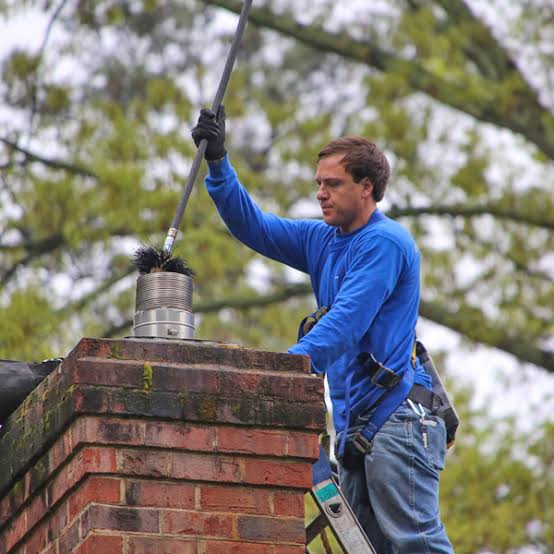There’s something timeless and comforting about gathering around a warm fireplace on a chilly evening. But behind every cozy fire lies an often-overlooked responsibility: chimney maintenance. Neglecting your chimney can put your home and family at risk, while regular care ensures safe, efficient, and enjoyable use of your fireplace. In this guide, we’ll walk through the essentials of chimney maintenance—from spotting warning signs to knowing when to call in the professionals.
Why Chimney Maintenance Matters
A chimney does far more than simply funnel smoke outdoors. It plays a critical role in protecting your home from fire hazards, carbon monoxide, and poor air quality. Over time, soot and creosote (a highly flammable residue from burning wood) build up along the chimney walls. Left unchecked, this can ignite and cause dangerous chimney fires. Cracks, blockages, or damaged liners can also compromise efficiency and safety, making regular maintenance a necessity rather than a luxury.
The Risks of Neglect
Failing to maintain your chimney can lead to several serious issues:
- Chimney Fires: Built-up creosote can catch fire and spread quickly.
- Carbon Monoxide Exposure: Blocked or damaged chimneys can push dangerous gases back into your home.
- Structural Damage: Moisture entering through cracks or a missing chimney cap can cause deterioration over time.
- Reduced Efficiency: A poorly maintained chimney can make your fireplace less effective at heating, costing you more in energy.
Simply put, regular chimney care is an investment in safety, health, and home protection.
Signs Your Chimney Needs Attention
While an annual inspection is the gold standard, you can also look for telltale warning signs that your chimney needs care:
- Strong Odors: A smoky or musty smell can indicate buildup or blockages.
- Excessive Smoke: If smoke fills your living space instead of venting outside, airflow is compromised.
- Visible Soot or Creosote: Thick black deposits inside the fireplace or flue are a red flag.
- Cracked Masonry: Exterior damage, especially in chimneys finished with stone veneer in Salt Lake City’s varying climate, can allow water to seep in and cause long-term structural issues.
- Animal Nests or Debris: Birds, squirrels, or leaves can create dangerous blockages.
Catching these issues early can save you from costly repairs later.
Routine Maintenance You Can Do
Not every aspect of chimney maintenance requires a professional. Homeowners can take a few proactive steps:
- Clean the Fireplace Regularly: Remove ashes after use, leaving about an inch to insulate the next fire.
- Check the Chimney Cap: Ensure the cap is intact to prevent animals, rain, and debris from entering.
- Inspect for Damage: Look for cracks in the chimney exterior or flue liner.
- Burn the Right Wood: Seasoned hardwood burns cleaner and produces less creosote than softwoods or damp wood.
- Install a Carbon Monoxide Detector: This small device can provide life-saving alerts in case of chimney issues.
These simple steps go a long way toward keeping your chimney safe and functional.
When to Call the Professionals
While DIY care is useful, chimney sweeping and inspection are best left to trained experts. The National Fire Protection Association (NFPA) recommends an annual inspection, even if you don’t use your fireplace often. A certified chimney sweep can:
- Thoroughly remove soot and creosote buildup.
- Spot cracks, leaks, or structural weaknesses.
- Test the draft and ensure proper ventilation.
- Advise on repairs or upgrades, such as liner replacement.
Hiring a professional not only gives peace of mind but also ensures your chimney complies with safety standards.
Seasonal Timing
The best time to schedule a chimney inspection and cleaning is before the heating season begins. Fall is typically the busiest time for chimney services, so booking earlier in late summer can help you avoid the rush. If you use your fireplace heavily during winter, consider a mid-season check as well.
Long-Term Benefits of Proper Care
Keeping your chimney in top shape pays off in several ways:
- Peace of Mind: You’ll enjoy your fireplace without worrying about hidden dangers.
- Cost Savings: Preventative care reduces the need for expensive emergency repairs.
- Home Value: A well-maintained fireplace and chimney can boost resale appeal.
- Efficiency: Clean chimneys burn wood more efficiently, producing more warmth with less fuel.
Also Read : How to Write a Tribute in a Pet Condolence
Final Thoughts
A fireplace is more than just a source of heat—it’s a symbol of comfort, family gatherings, and timeless charm. But that warmth comes with responsibility. Regular chimney maintenance isn’t just about sweeping out soot; it’s about protecting your home, your loved ones, and your investment. By combining simple at-home care with annual professional inspections, you’ll ensure your chimney remains safe, efficient, and ready to provide cozy fires for years to come.



